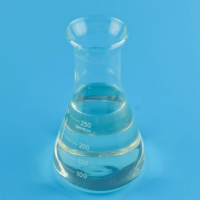Professional solutions on concrete addtives, Concrete Foaming Agent, Superplasticizer, CLC Blocks Additives, and foaming machine
(What is Hollow Glass Microspheres)
What is Hollow Glass Microspheres
The present glass microsphere composition has a considerably higher silica content than those made in earlier experiments. This is a direct result of the higher furnace temperatures we are now using (i.e., 1500°C vs 1200°C). Because the current sphere sizes are larger, their terminal velocities are higher and residence times shorter in the refining/fusion furnace. Consequently, we Have had to operate at a higher furnace temperature to get the equivalent level of product refinement. In the initial droplet work by Hendricks and Dressier, a sodium borosilicate glass was used that was similar in composition to the glass prepared by E&C (see Table 1). As expected, the durability of this glass was quite poor. Rosenzweig et al. 4 investigated a number of different glass compositions with the aim of improving durability while maintaining three water-soluble starting mixtures and a low melting, low viscosity glass. Because of the solubility requirement, the addition of alkaline earth and alumina, which are well-known components for increasing durability, was not possible. Therefore, the approach taken was to develop a mixed-alkali borosilicate glass. It is well known that mixed alkali glasses generally have better durability than single alkali glasses of equivalent molar compositions.' 2 "This mixed alkali effect is thought to be related to the decreased mobility of each ion as a result of the addition of the other. Our current glass solution composition is very similar to the original Rosencwaig et al. four mixture but with slight changes in B2 0 3 and K2 0 content. The Li 2 0 was omitted from the more recent formulations because it was found to produce little if any, improvement in durability at the 0.1% concentration level. Physical property data for the LLNL glass microspheres. Values are given for two different glass compositions: one of higher alkali content and the other of higher silica content.
Values for many of the physical properties of Hollow Glass Microspheres
In such cases, the corresponding reference sources are listed. Measurements made in our laboratory were carried out either on glass spheres or glass boules having the same composition. W. Haller prepared the boules at the National Bureau of Standards. The mechanical properties of the microsphere glass are important for establishing the proper DT fill procedure. During the filling cycle, the glass is heated to between 300 and 400°C and then subjected to an external DT pressure. Because the fill rate is proportional to the pressure gradient across the shell wall, the higher the external pressure, the greater the fill rate. Quantitative measurements of the tensile strength of LLNL glass microspheres have not been reported. However, an estimate of tensile strength can be obtained by observing the maximum fill pressure that shells of a given aspect ratio can hold. An example of such data is given in Fig. 7, where the measured maximum fill pressure, measured in psi, is plotted against the shell radius-to-wall-thickness RJt" ratio. The dots represent measured fill pressures for shells that have survived the fill and wash procedure. Note that the dots span a region of tensile strengths within the shaded area of roughly 15,000 to 30,000 psi.
Conclude this discussion of Hollow Glass Microspheres
To conclude this discussion of microsphere strength, we must emphasize that the tensile strength is probably the limiting characteristic of the glass during DT fill. In a previous paper, 3' it was thought that the tensile and compressive strengths of the glass sphere were roughly equal and quite large and that most failures occurred by buckling during application of the external DT pressure. As a consequence, we developed a DT fill procedure to help avoid buckling. Our current data, however, show that the effective tensile strength is much lower than previously thought, and more in line with what is commonly measured. As a result, most failures occur under tension at surface flaws at the end of the DT fill cycle. The exception to this is very high aspect ratio spheres. For these size spheres, the buckling pressure may be less than the desired fill pressure. Therefore, the fill would have to be carried out in steps to avoid large losses by buckling failure. The permeability of silicate glasses has been extensively studied, and a sizeable body of data exists that can be used to predict the permeability behavior of glass microspheres. The studies by Shelby5 0 -' 6 and Altemose 4 7 — 1 8 on H 2 and He permeability in silicate glass are of particular value to our work. Souers et al. w have reviewed these data and used them to interpret the permeability behavior of the 3M and E&C glass microspheres that were used in early ICF experiments. More recently, Woerner et al. three / have measured the D and He permeability of the high alkali glass spheres and found excellent agreement with values predicted on the basis of the empirical equations developed by Souers et al.
Price of Hollow Glass Microspheres
Hollow Glass Microspheres particle size and purity will affect the product's Price, and the purchase volume can also affect the cost of Hollow Glass Microspheres. A large amount of large amount will be lower. The Price of Hollow Glass Microspheres is on our company's official website.
Hollow Glass Microspheres supplier
If you are looking for high-quality Hollow Glass Microspheres, please feel free to contact us and send an inquiry. (sales@cabr-concrete.com). We accept payment via Credit Card, T/T, West Union, and Paypal. TRUNNANO will ship the goods to customers overseas through FedEx, DHL, by air, or by sea.
(What is Hollow Glass Microspheres)







